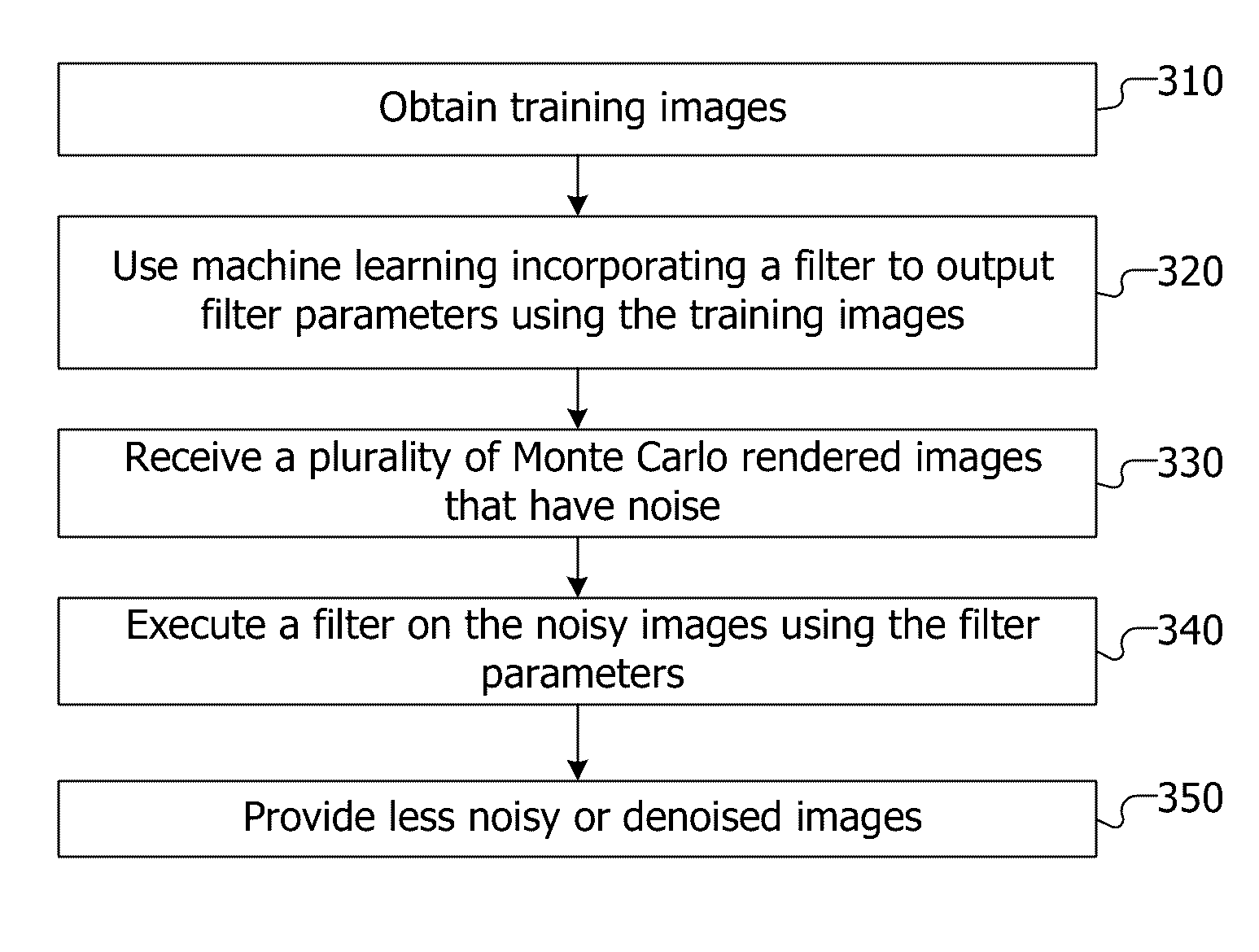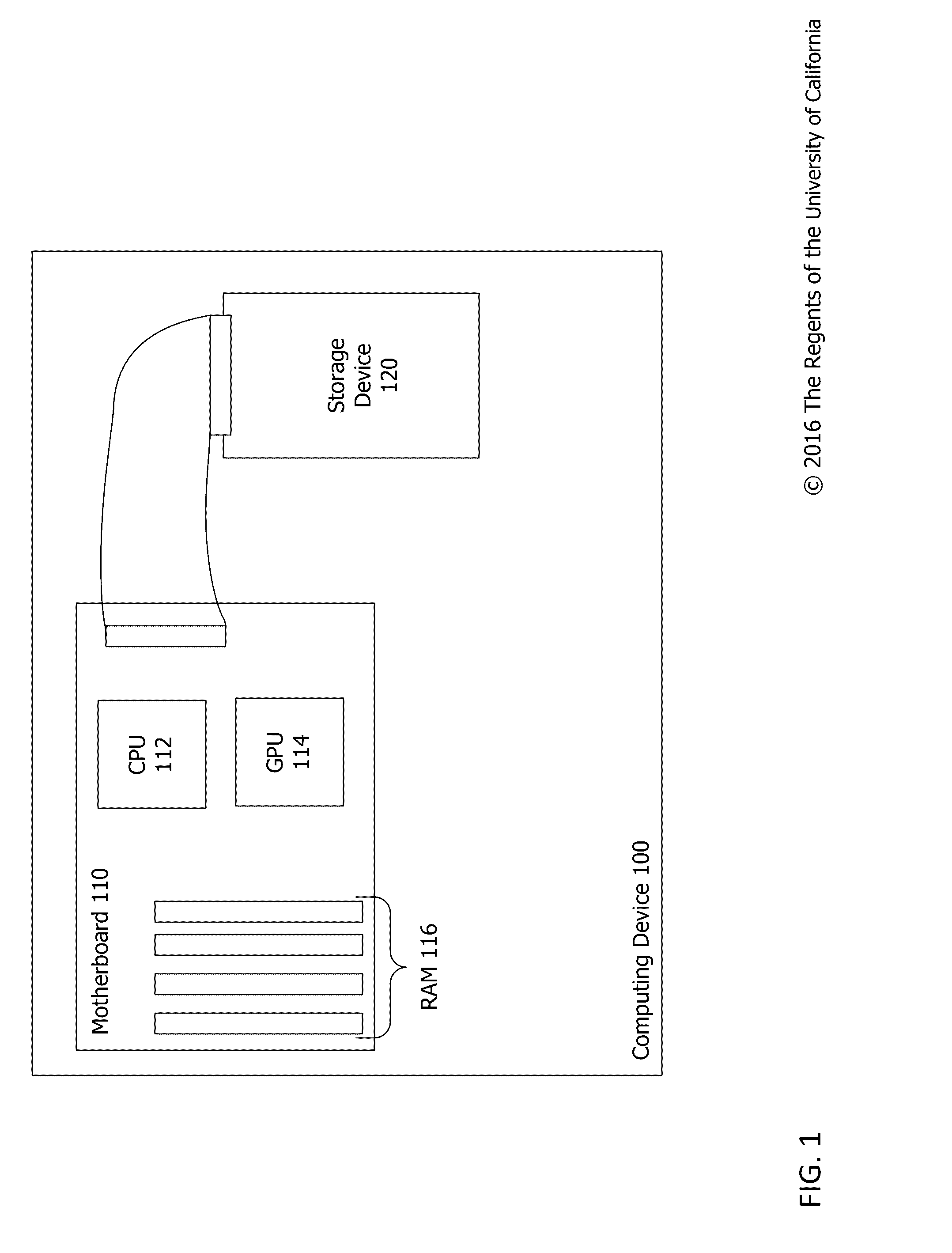Using machine learning to filter monte carlo noise from images
- Summary
- Abstract
- Description
- Claims
- Application Information
AI Technical Summary
Benefits of technology
Problems solved by technology
Method used
Image
Examples
Embodiment Construction
[0031]Monte Carlo rendering allows for the creation of realistic and creative images. However, the resulting images may be full of noise and artifacts. As such, the images are considered noisy. The term “noise” when used alone herein refers to Monte Carlo or MC noise that reduces image quality and not desirable noise.
[0032]A machine learning approach to reduce noise in Monte Carlo (MC) rendered images is described herein. To model the complex relationship between ideal filter parameters and a set of features extracted from the input noisy images, machine learning is used. In one embodiment, a multilayer perceptron (MLP) neural network as a nonlinear regression model is used for the machine learning. To effectively train the neural network, the MLP neural network is combined with a filter. In this arrangement, the MLP evaluates a set of features extracted from a local neighborhood at each pixel and outputs a set of filter parameters. The filter parameters and the noisy samples are pr...
PUM
 Login to View More
Login to View More Abstract
Description
Claims
Application Information
 Login to View More
Login to View More - R&D
- Intellectual Property
- Life Sciences
- Materials
- Tech Scout
- Unparalleled Data Quality
- Higher Quality Content
- 60% Fewer Hallucinations
Browse by: Latest US Patents, China's latest patents, Technical Efficacy Thesaurus, Application Domain, Technology Topic, Popular Technical Reports.
© 2025 PatSnap. All rights reserved.Legal|Privacy policy|Modern Slavery Act Transparency Statement|Sitemap|About US| Contact US: help@patsnap.com



